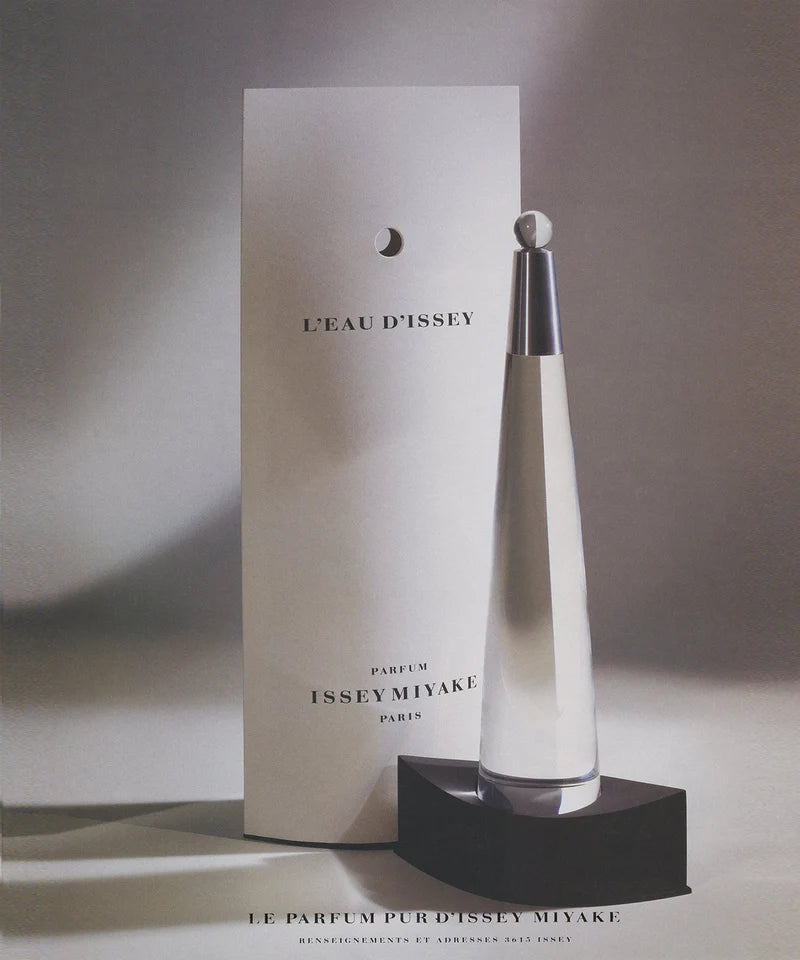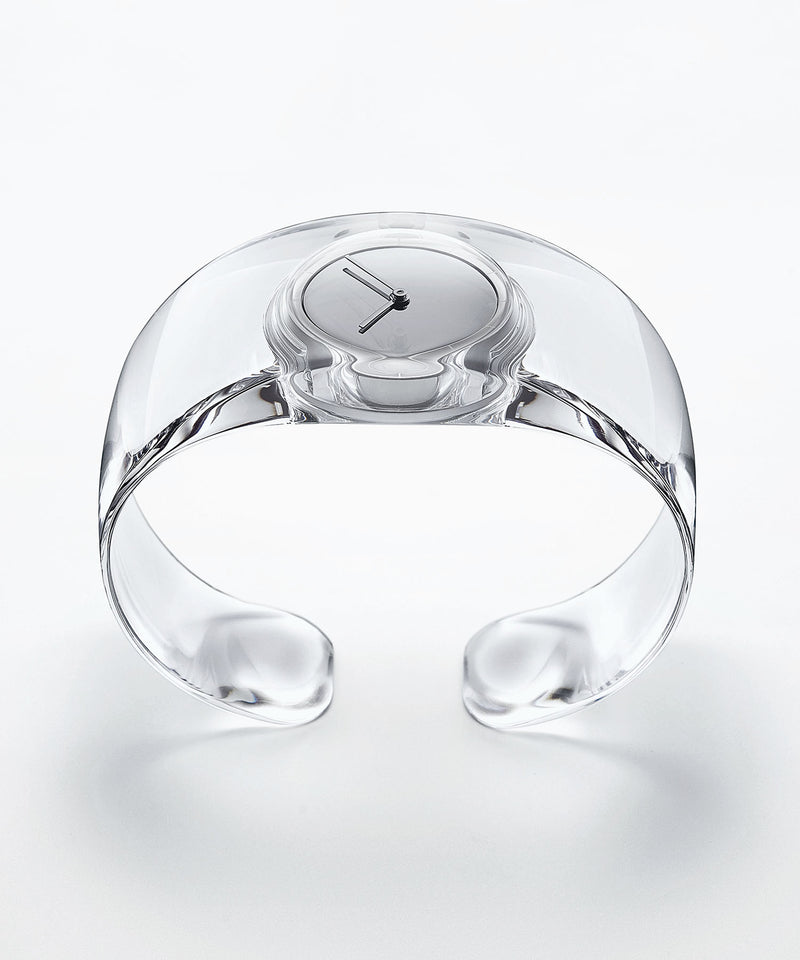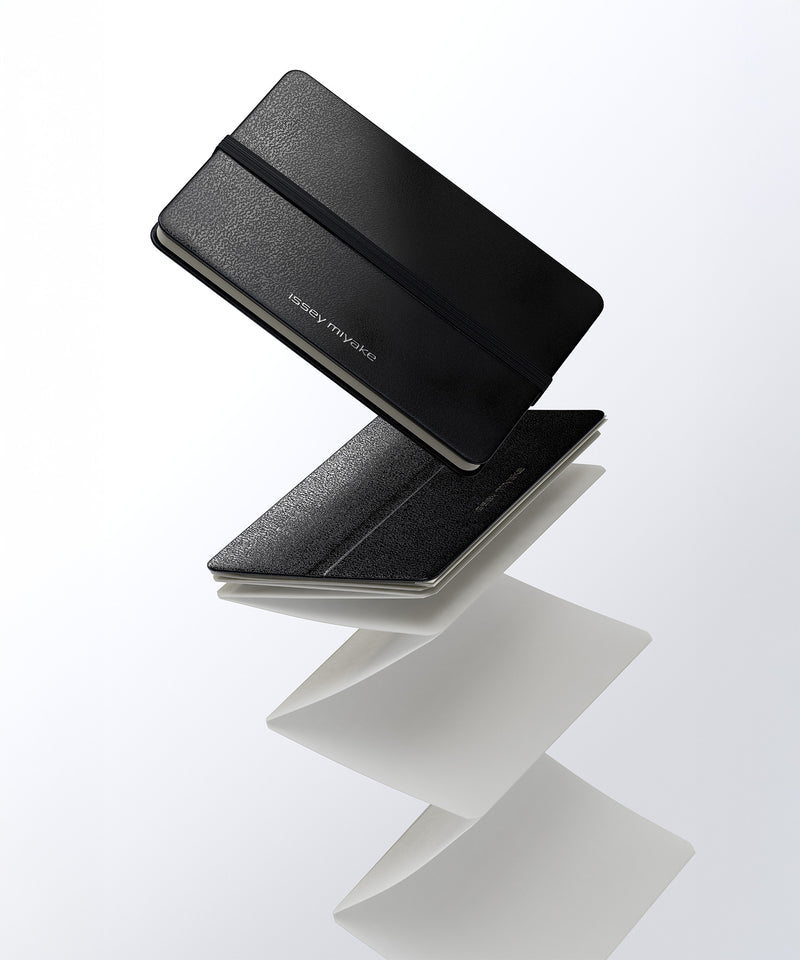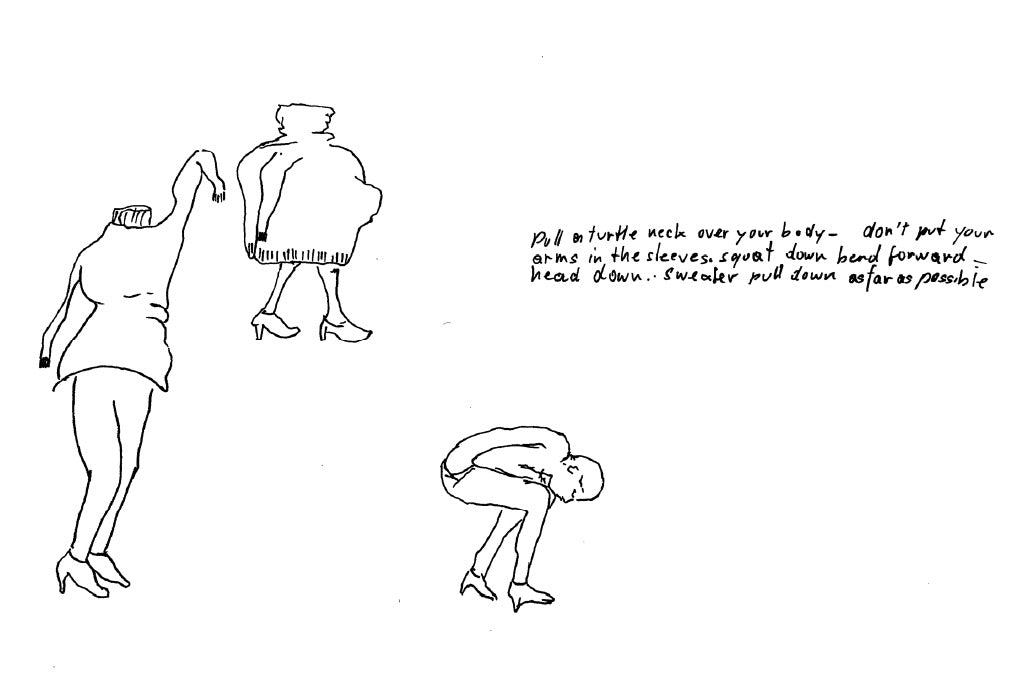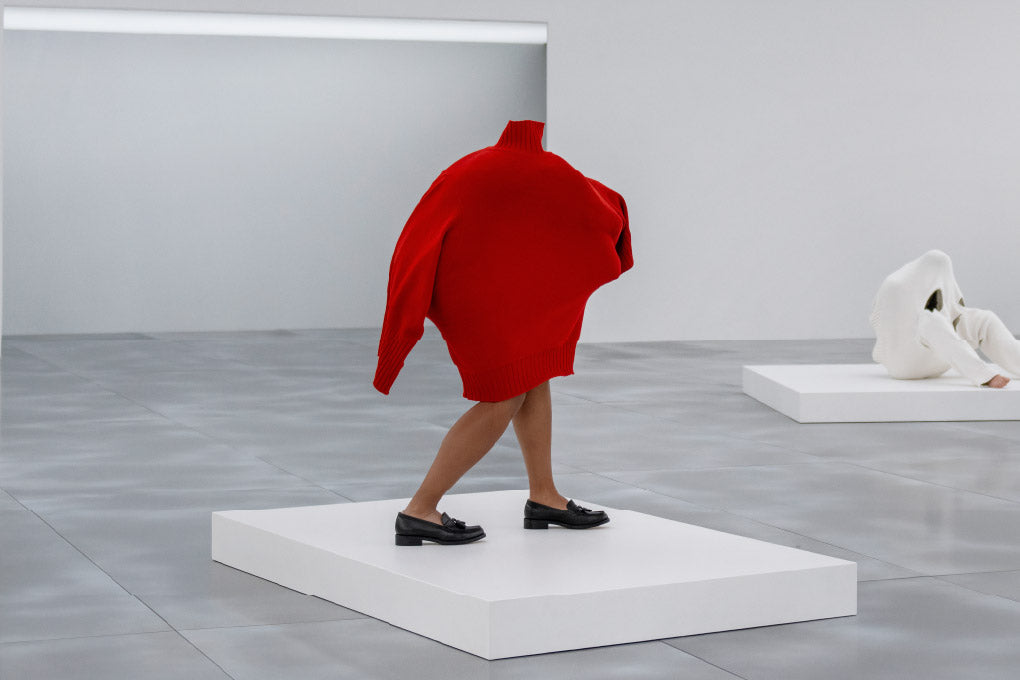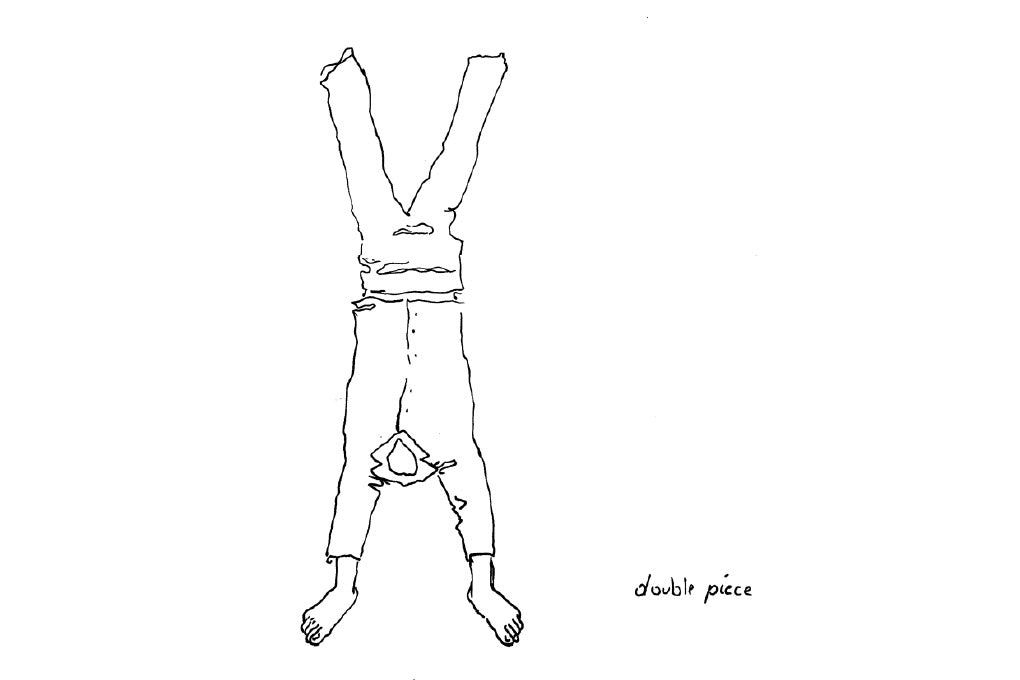SPECIAL PROJECTS - SPECIAL PROJECTS
An Unguided Guide to Making Unexpected Forms
Fit your head, arms and legs, and body into a piece of knit or a pair of pants, assume a position, and hold that position—as if you were a sculpture. Created with the original concept by Austrian artist Erwin Wurm, a series of performative works titled One Minute Sculptures set in motion the presentation of the Autumn Winter 2025/26 collection at Carrousel du Louvre in Paris.
The artist invites the viewer to follow certain instructions to hold a specific and often awkward position for a short amount of time, to become part of the sculpture for a brief moment—blurring the boundary between the observer and the observed. What has inspired the collection [N]either [N]or is the artist’s underlying concept of treating an ordinary thing in an extraordinary way to challenge the viewer’s preconception. On this occasion, ISSEY MIYAKE designer Satoshi Kondo met with Erwin Wurm to further explore the many in-between’s and the ambiguity that exists in them.
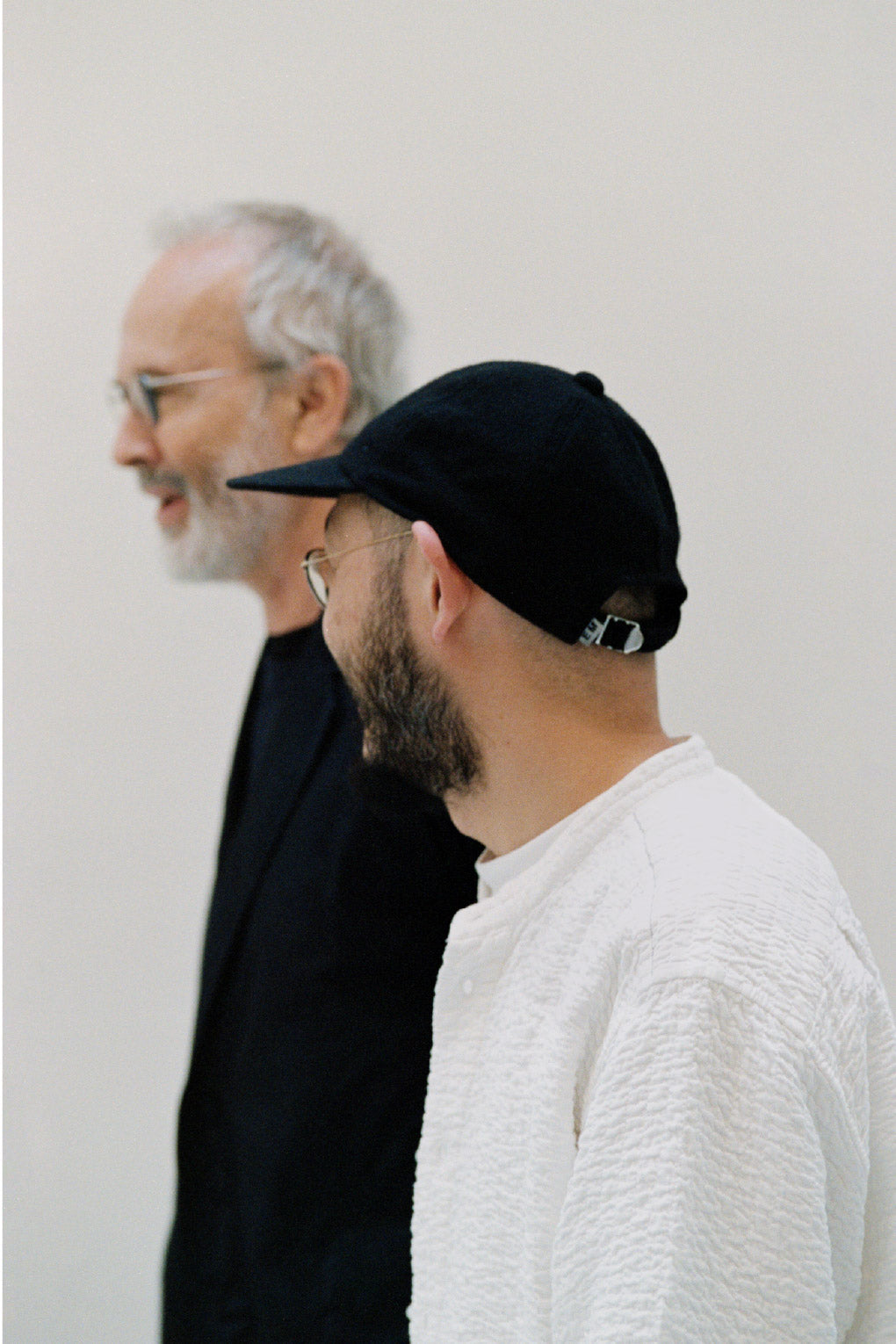
Wurm: I defined myself as a sculptor, as an artist who makes sculptures.I first wanted to become a painter and apply for an art school, and there was an entrance test. They refused to let me join the painting class and put me instead into the sculpture one. So you know, at first, I was really frustrated and disappointed. But then after a while, I thought that maybe it’s a challenge I should take. From then on I started to work with the notion of sculpture. I wanted to learn what sculpture is. And this interest in the notion of sculpture is the red line through my work, and through my entire artistic career. And on the other side, only to work with the notion of sculpture was not enough. I wanted to also be connected to society, the society I live in, and the time I live in.
When I started to work with sculpture, I began by taking issues and objects of our time and questioning them from a sculptural perspective. I had realised that the result was an interesting thing.
When I studied bronze or metal sculptures from Roman, Greek, and Japanese antiquities, mostly large-scale sculptures or metal cast sculptures of gods, animals or Buddha, I realised that these pieces are only defined by a very thin layer of skin—a bronze skin—and that they are empty inside. So this very thin layer of bronze brought me to the idea that we have our skin but also a second one that is clothes. Clothes themselves have no sculptural qualities; they are more or less two-dimensional. But they cover and give the idea of three-dimensionality and of mass.
As for the One Minute Sculptures series, I first made some sketches and tried everything out myself, and tried the ideas with my friends so that they too became sculptures. When I documented them in photographs or films, these people told me the experience was so fun and interesting. And that was when I thought maybe we could try it out with other people, to invite the public to perform the pieces. I always tell the public that they have to do it like an exercise and follow my instructions.
Kondo: To make this collection, my team and I first did a series of One Minute Sculptures exercises, or should I say a series of studies in the spirit of it. We felt that it really helped us open up our minds and broaden our perspectives.
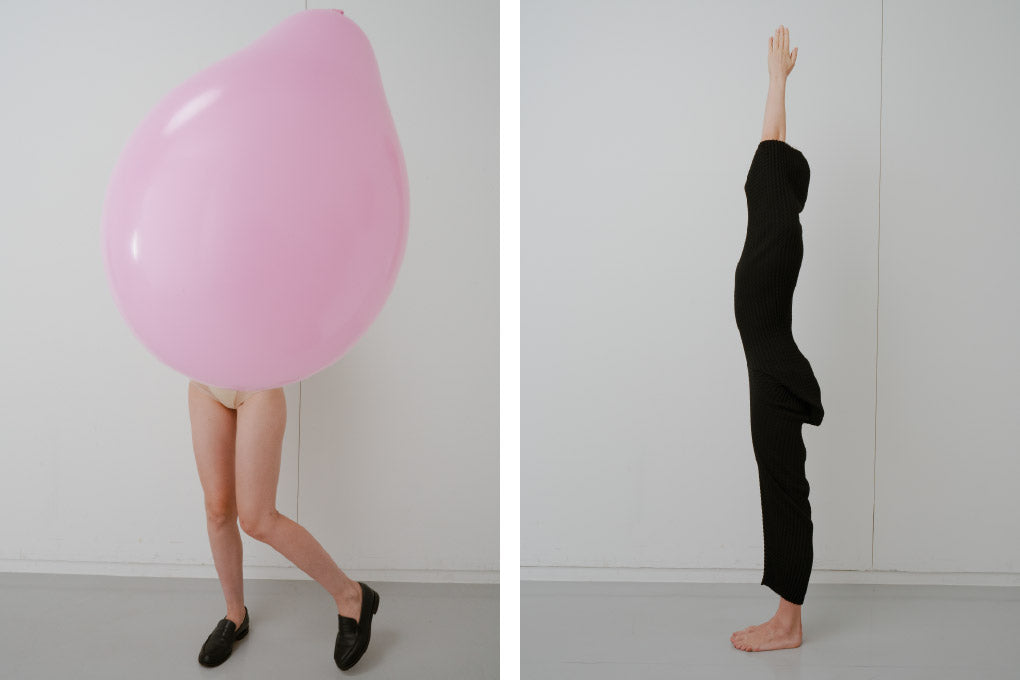
Studies done by Kondo and design team in the spirit ofOne Minute Sculptures
Wurm: Yes, opening perspective is what’s so great about fashion…I like to go shopping a lot because it gives me the possibility to invent myself, to make myself anew. Because we all know we have different “selves”. I am Erwin wearing jeans and a T-shirt, but I am also Erwin in a traditional suit. They make different perceptions. Very often, my wife and I, we go in the morning when we get dressed to the wardrobe and listen to the dresses. Sometimes a t-shirt is calling “Take me”, or this jacket is calling “Come on. Choose me”. And that’s the best moment. When we decide what we are going to wear, it’s mostly a stupid moment.
Kondo: When I design and make clothing, I always consider the presence of the wearer’s body and start by looking at its relationship with a piece of cloth, a simple and fundamental element. And in a process like this, the variable of “being guided by chance” is very important to me as a designer. This element of chance, or randomness if you will—for example, a knit piece made into a strange, unexpected form by accident—is what inspires me and what I try to work with, as I imagine a dialogue between this variable and the human body.
Wurm: I totally understand. That’s a great thing. I have learned that when I have a concept, and when I follow that concept to realise the piece, it’s okay. But it’s not the best. When the piece takes over, and I accept that it leads me, then it might bring me somewhere else, and somewhere much more interesting. But that’s very complicated, because it’s scary.
Kondo: Recently, I’ve been thinking that there should be more freedom in wearing, and clothing itself should be freer, as if it’s alive. I also wonder what a “living garment” would look like.

Studies done by Kondo and design team in the spirit of One Minute Sculptures
Wurm: Issey Miyake has made fantastic clothes. His approach to the body and its relation to clothes is really different and special. The floating materials are not sticking to the body structure but become almost like independent free moving volumes with a person inside. This sculptural approach is inspiring.
Kondo: You can say that we are creating the unfilled space that is between the fabric and the wearer’s body. And whether to make that space in harmony, bounce, or breathe with the wearer is what is interesting about our design practice.
Wurm: We do the same. It’s very interesting. It’s such a different approach from how people usually consider clothes design. That’s great. You know, I inspired you and you inspire me a lot when I see your work and the work of Mr. Miyake. I got great ideas for new installations.
Kondo: I feel that the integration of One Minute Sculptures into the scenography of our collection presentation is quite refreshing and inspiring to the audience. The concept and performative aspect of this series opened many interpretations to look at this collection. It is the ambiguity in interpreting what is a human being, a sculpture, and clothing that challenged the way to perceive the collection.
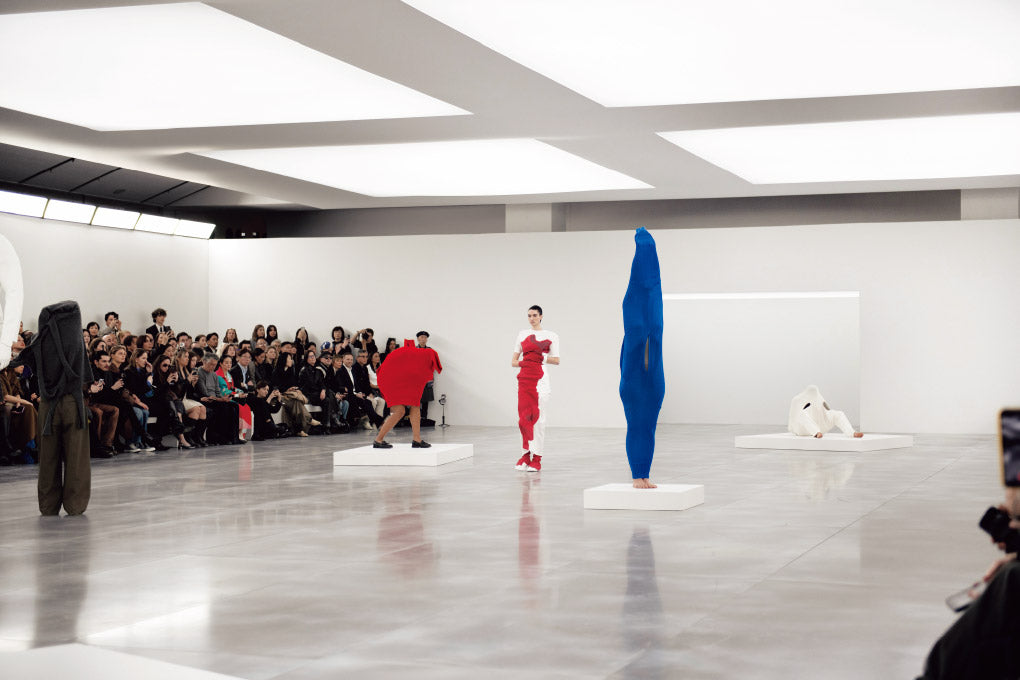
Wurm: As for the title [N]either [N]or, first of all, I think we are missing dramatically subtlety nowadays because everything gets so polarized, black or white, and I think this is a great concept for actuality. And also, in my work, I have always tried to open boundaries, open the boundaries of media. When I look at my Flat Sculptures, they are paintings, but they open to a sculpture, a sculptural idea. By breaking limits of definitions of sculpture and of painting, and of video, of photography, you also allow these subtleties of thinking. This is something that is also great in your work with fashion, because when you stop those predetermined concepts of what is a top, what is a jacket, what is trousers, then you also allow other forms of being. I always believe that art creates a strong sensibility through beauty which, by the way, science also does, so that we are aware of certain things that we fail to notice.
Kondo: As a designer, I like ambiguity in a creative process for the beauty I found in it, and the fact that there are no definite answers, when it comes to design and making.
Wurm: Or, maybe the question is the answer.
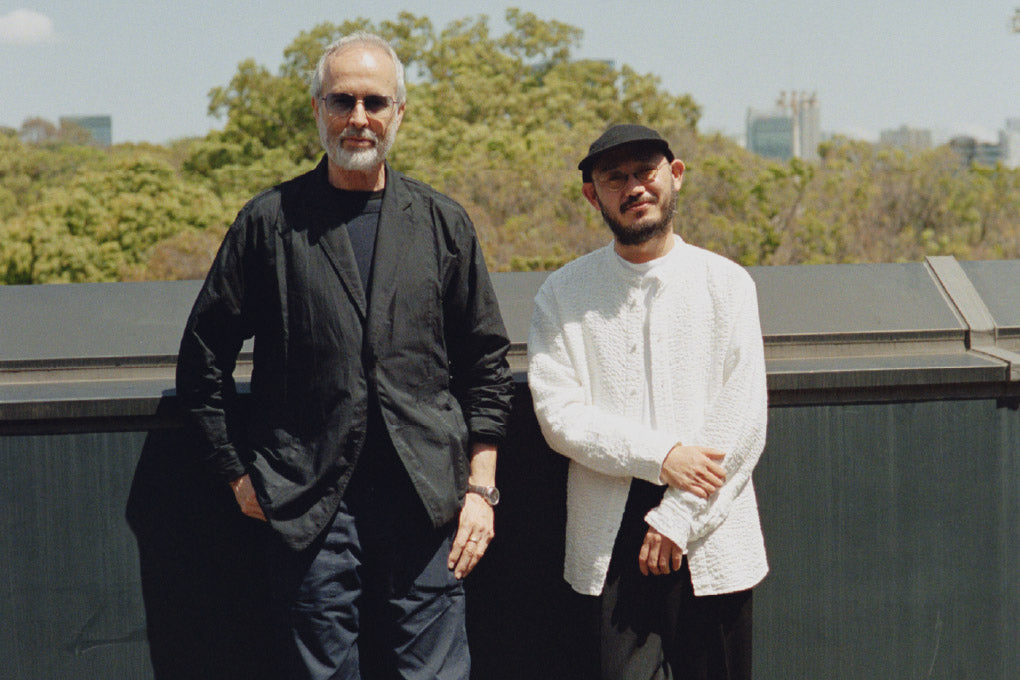
Erwin Wurm
Erwin Wurm (b. 1954 in Bruck an der Mur, Austria) lives and works in Vienna and Limberg, Austria.Over the course of his career, Erwin Wurm has radically expanded conceptions of sculpture, questioning its notions of time, mass and surface, abstraction and representation.With his One Minute Sculptures, began in 1996/1997, Wurm gives instructions to participants that indicate actions or poses to perform with everyday objects. These sculptures are by nature ephemeral and by incorporating photography and performance, Wurm challenges the formal qualities of the medium as well as the boundaries between performance and daily life, spectator and participant.Some other works of him anthropomorphize everyday objects in unsettling ways—adding legs to handbags, contorting sausage-like forms (Abstract Sculptures) or expanding the volume of technical objects (Fat Car, Fat House). While Wurm considers humour an important tool, his work opens to essential philosophical, psychological and social questions.
Erwin Wurm has had solo exhibitions at numerous international institutions including most recently Towada Art Center, Japan (2025), Albertina Modern, Austria (2024–25), Yorkshire Sculpture Park, UK (2023), Tel Aviv Museum of Art (2023), SCAD Museum, USA (2023), Suwon Museum of Art, Suwon, Korea (2022), Biblioteca Nazionale Marciana, Venice, Italy (2022), Museum of Contemporary Art Belgrade, Serbia (2022), Taipei Fine Arts Museum, Taipei City, Taiwan (2020), Musée des Beaux-Arts, Musée Cantini and Centre de la Vieille Charité, Marseille, France (2019) and Kunstmuseum Luzern, Switzerland (2018). In 2017, Erwin Wurm represented Austria at the 57th Venice Biennale.
Wurm’s work is included in the permanent collections of major international institutions, including Tate Modern, London; The Museum of Modern Art, New York; Solomon R. Guggenheim Museum, New York; Centre Pompidou, Paris; Albertina, Vienna; National Museum of Art, Osaka; and MMK Museum für Moderne Kunst, Frankfurt.
Erwin Wurm is represented by the galleries Thaddaeus Ropac, Lehmann Maupin and König Galerie.










